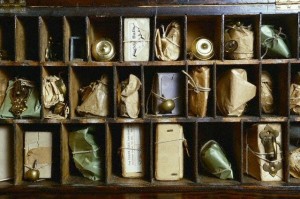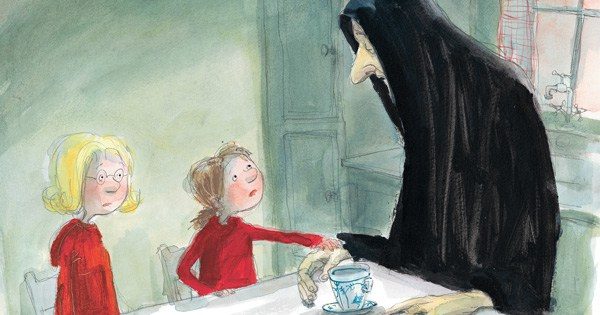One of my favorite stories is The Lost Thing by Shaun Tan. It takes place in a weird post-industrial landscape. A boy finds a bizarre and mammoth creature on a beach, and decides to find a home for it. (“Nobody else seemed to notice it was there. Too busy doing beach stuff, I guess.”)
There is a deep melancholy in The Lost Thing about what gets left behind. People who read the story may have different ideas about what it all means. For example, does the lost thing represent the imagination? Is it meant to be a paean to society’s castoffs? An indictment of capitalism? Is it about our tendency to categorize and pigeonhole the foreign and unfamiliar? (Responding to the story’s ambiguity, Shaun Tan has said: “I guess the concept of a ‘lost thing’ is quite philosophical, but not in any specific way.”)
What remains interesting to me about The Lost Thing, and what I missed on my first reading of the story, is the disposition of the main character: i.e. he is a scavenger. When the story begins he is busy collecting bottle-caps on the beach. On the one hand, there is this streamlined world where people are forever self-occupied and, on the other hand, there is this boy who is dawdling along, scouring the wayside of the world for useless bits-and-bobs. In fact, it could be argued that the only reason he alone spots the lost thing and responds to its presence, is that he is already somewhat stopped or slowed by his scavenging.
There is a whole underground of people combing the world for lost and remaindered things: the dumpster divers, the woman with the rattling cart, the freegans, and the archivists of our surplus. (I wrote about some of them here.) I see the hero of The Lost Thing as belonging to this tribe of urban gleaners. Where others proceed myopically, moving through narrow corridors of experience, he sees the world laterally, moving unbriskly, always taking in the periphery.
Last night I spoke at a museum in Brampton that is hosting an exhibition of personal artifacts selected by the local community. “What objects have you kept from your past and why?” There was an old chair, a medallion necklace, a Royal Doulton figurine, an old airline ticket—each object embedded in a story. As I wandered about, taking a glimpse into other people’s lives, I was reminded of the power of museums to sacralize the everyday. What might have been random bric-a-brac in another context suddenly carried the air of “worthiness.”
But what about those things that don’t really come from anywhere, or have an existing relationship to anything or anyone, and are ‘just plain lost’? What about the objects that have been stranded without a story?
In Shaun Tan’s modest allegory, lost things are portals. They are the doors through which we encounter worlds and creatures we might rarely meet in the normal run of things. It is dedicated to “Those Who Have More Important Things to Pay Attention To.” Yet for all its small epiphanies, it ends on a somewhat disheartening note. The boy-narrator concludes:
“I still think about that lost thing from time to time. Especially when I see something out of the corner of my eye that doesn’t quite fit. You know, something with a weird, sad, lost sort of look. I see that sort of thing less and less these days though. Maybe there aren’t many lost things around anymore. Or maybe I’ve just stopped noticing them. Too busy doing other stuff, I guess.”
How do we stay open when the temptation is to close down to others, to feel overwhelmed by the too-muchness of our digital age? The story offers no pat answers but it does show that the world is an infinite and whimsical place for anyone willing to embrace strangeness and mystery.


